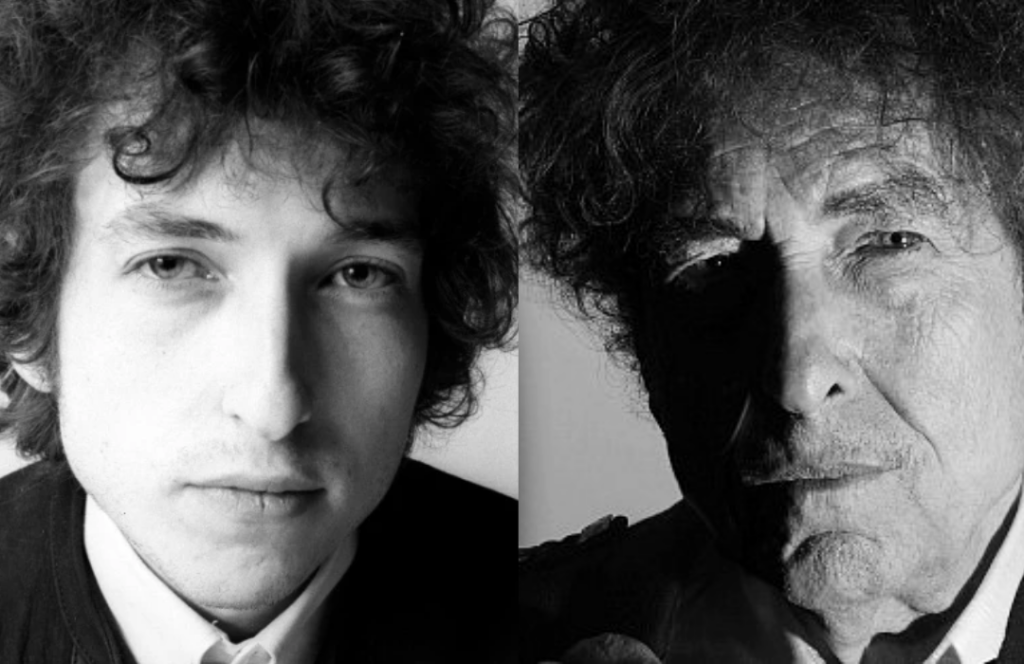
How does it feel?
To be without a home
Like a complete unknown,
like a rolling stone
– “Like A Rolling Stone,” Bob Dylan
Enigma. Trickster. Chameleon. Shapeshifter. All are terms used, at one time or another, to describe music legend Bob Dylan. On hearing that Hollywood was making yet another film attempting to mythologize an artist who was already mythic, many scoffed. But the critical and audience response to A Complete Unknown has been overwhelmingly positive. So, how exactly did the filmmakers and cast pull it off?
For starters, they played with the history; the filmmakers were willing to get things wrong. Dylan, who read the screenplay before blessing the project and is a man who likes to maintain mystery around himself, must have appreciated that; mystery is a key ingredient in what the film gets right. Seeming almost to slip into the skin of young Dylan, Oscar nominee Timothee Chalamet gives a masterful performance in a film that never lets the audience wrap our minds around its subject.
Keeping everyone at arm’s length amid the frenetic fame the mid-1960s brought him, Dylan is skeptical of stardom. The film depicts a posh gathering, awash in record industry executives and journalists wanting to curry favor with the young troubadour. As they crowd around him, Dylan storms out, muttering, “200 people in that room and each one wants me to be somebody else.” Seeing everyone wanting to pigeonhole him, he decided he’d have none of it.
So, like a rolling stone, he gathered no moss. Instead, he explored the 200 versions of himself he preferred. Since 1965, when A Complete Unknown concludes, Dylan has released dozens of albums, a mix of masterpieces, curiosities, and outright flops. He’s taken a foray into country music, offered up three Christian albums (steeped in Old Testament theology), three Sinatra-era standards albums, two collections of acoustic blues covers, and two offerings as part of the Traveling Wilburys. He’s won an Oscar, the Nobel Prize for Literature, started a whiskey label, became an iron sculptor, hosted a radio show, and – in 2020 – scored the first number-one song of his career, a seventeen-minute dirge about the assassination of JFK titled, “Murder Most Foul.”
Shapeshifter, indeed. Dylan’s relevance stems not only from his prolific output but also from his constant curiosity. He is always willing to change, not to fit in with what seems currently culturally relevant but to pursue and explore what interests him.
So where is mindfulness in all of this, one might ask? After all, few of us are riding a wave of extraordinary talent like Bob Dylan. Certainly, he has often acted out of self-interest (or self-preservation.) However even imperfect role models can inspire meritorious reflection and action. Reflecting on Bob Dylan, and to a degree on the extraordinary young actor who has introduced him to a new generation, we might appreciate our freedom to change.
That freedom starts with paying attention to our experience. If we notice where we are, who we think we are, and what thoughts fill our minds, we may come to the awareness that we are all always playing different roles and being perceived differently by different people: to our children, we are a parent; to our boss, a worker; to our teacher, a student; to our partner, a lover; to our barista, a customer, and so on. Though we believe we walk through this world as a singular personality, each role we play in life invites our unique human qualities to meet the task at hand. We contain multitudes (to quote Dylan, quoting Walt Whitman). We are ourselves shapeshifters.
When we sit quietly and the inner chatter arising from our various roles subsides, we settle into our basic nature of awareness. That can be liberating. As Alan Watts said, “You are under no obligation to be the person you were five minutes ago.” This doesn’t mean being inauthentic. It means being curious and self-aware enough to recognize the depth of our capacities and contradictions.
If we are mindful, we can discern the elements of each role that best serve ourselves and others. Our persona constantly adapts to situations. Within the roles we already play we may find our greatest strengths, strengths that are transferable: patience with our kids can be extended to our colleagues; confidence that is effortless with our friends is poise we can bring to our romantic relationships; generosity toward loved ones can emerge as kindness toward a stranger in need. Looking through the lens of compassion, we could become everyday philanthropists. And mindfulness practice cultivates the self-awareness we can count on to help us see where we still have work to do.
That work may not generate artistic personas leading to stardom. But perhaps that’s because often we don’t view our life – and our mindful awareness of life – as the art form it is. We are, after all, all of us on our own, more or less unknown, but always the stars of our ever evolving shows. Shapeshifters.
Dylan, for all his flaws, exemplifies this kind of awareness. He hasn’t allowed others to pigeonhole him. Perhaps our great performance might be not to pigeonhole ourselves. How does that feel?




